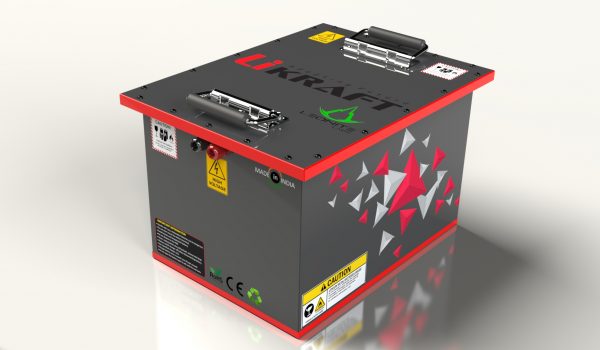Trends and Innovations in Lithium-ion Battery Technology for Electric Rickshaw
Electric vehicle batteries have gained widespread acceptance and prominence post-pandemic. However, they have been around since the 1900s. Over the years, innovations have reshaped electric vehicle batteries and turned them into a better alternative that we use today.
EV batteries are the first and foremost component of electric vehicles. In today’s market, lead-acid batteries and lithium-ion batteries are the most common variants of electric batteries. Both have ups and downs, and consumers prefer them after weighing their pros and cons and tallying them with their specific needs. However, lithium-ion batteries offer better results due to their lightweight and higher performance than lead-acid batteries. Moreover, they have the benefit of storing more energy in small packages, making them a more efficient choice.
Lithium-ion batteries have multiple variants in the marketplace, with unique features and distinct operational attributes. Several introductions are still on the way, making the lithium-ion battery a better alternative for an end-user. In this blog, we will discuss various unique trends in lithium-ion batteries and iconoclastic changes that may repurpose the battery.
Daunting Obstacles
The absence of manufacturing hubs in India was a major obstacle, leading to market irregularities and an increase in the import of battery cells from other countries like China, Japan, and South Korea. Increased imports lead to the degradation of the local currency, causing a severe economic setback.
The government of India has taken several initiatives to address these issues. The most practical one among those schemes is the Production Linked Incentive (PLI). It incentivizes companies involved in advanced battery manufacturing. Furthermore, measures are taken to create establishments for lithium-ion battery manufacturing.
One cannot neglect the environmental impact of battery manufacturing and disposal. Production of lithium-ion batteries requires additional input and raw materials, which affects the environment on multiple grounds. Moreover, if the batteries are not recycled properly, they become grave predicaments for our environment. Hence, researchers are conducting their study to develop more eco-friendly options.
Existing Trends in the Market
The following are the latest trends that manufacturers are following due to behavior and demand by the end-user:-
- Shift towards Lithium-ion phosphate (LFP) batteries: LFP batteries are a better alternative with higher safety, longer cycle life, and better shelf life. Moreover, they have a lower susceptibility to thermal runaway. Their better performance and ability to endure thermal shock make them a reliable option for the regular use of e-rickshaws.
- Development of Solid-State Electrolytes: Solid-state electrolytes are less flammable in the liquid state, making them a safer alternative for powering electric vehicles. Moreover, these have a faster charging time and higher energy density, providing the end user a better experience.
- Active Balancing (BMS): Active balancing BMS is one of the attributes present in the batteries of reputed brands and provides batteries with higher performance and an additional level of stability.
- Integration of Battery Swapping Infrastructure: It is an initiative for a greener tomorrow and provides the end user with some discount for the new battery in exchange for the depleted battery. With the same, downtime increases.
- Recycling and Reuse of Li-ion batteries: Battery recycling is one of the practical measures that reduce environmental degradation.
Evolving Lithium-ion Battery Technology
The following are some of the advancements to be introduced in Lithium e rickshaw battery:-
- Silicon Anodes: Silicon anodes can potentially increase the energy density of Lithium-ion batteries. However, some challenges with this battery require some effort from researchers and developers before they are deployed for public use.
- Graphene-based Electrodes: Its unique properties, such as high electrical conductivity and large surface area, make it a better material for Li-ion battery electrodes. Researchers are making efforts on multiple fronts to explore various applications of graphene in batteries, which include improving conductivity, enhancing charge transfer, and preventing electrode degradation.
- Self-Healing Electrolytes: With these, microcracks get repaired, which occurs due to mechanical and thermal shock due to regular wear and tear. This technology’s development is at its primitive stage, but with the same, the battery’s durability will improve.
- Fast-charging Technologies: Several fast-charging technologies are being developed to reduce charging times for Li-ion batteries. These technologies involve modifying battery chemistry, electrode materials, and charging protocols to enable faster charging without compromising battery safety or lifespan.
Concluding Remarks
Lithium-ion batteries have gone through a series of changes and have become one of the most preferred batteries on the market. There are some looming threats relating to lithium-ion battery production for which the government has taken the required initiative. Multiple advancements along the way will reform the existing variant of Lithium-ion batteries. Likraft is the best platform for buying an electric rickshaw battery.


